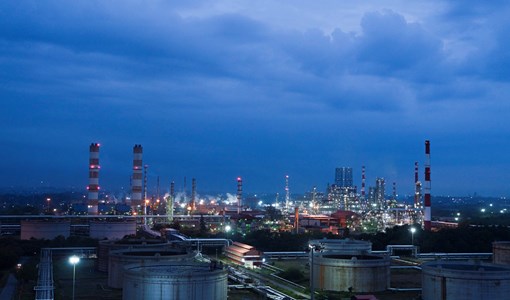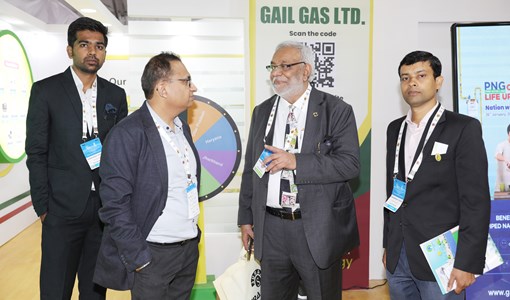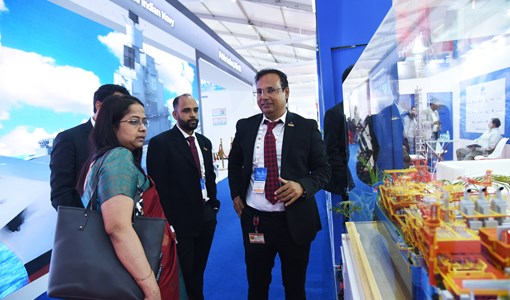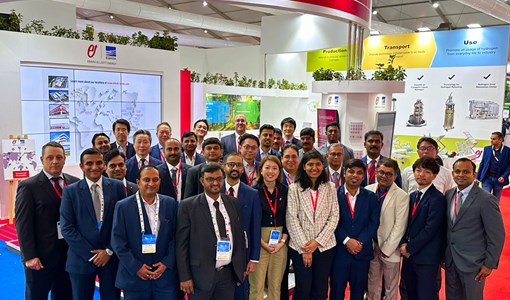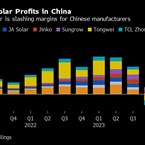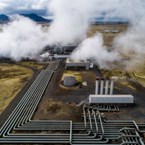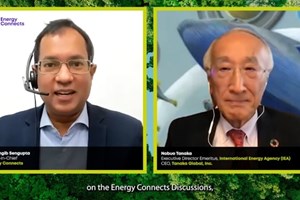Bringing the essential innovation needed to steer a global energy transition agenda
As thousands of smart energy minds gather at Gastech, Baker Hughes Chairman and CEO Lorenzo Simonelli explains how collaboration is part of the mix to maintain the sector’s transition momentum.
What is your outlook for the gas and LNG sector?
We remain positive on the near- and long-term prospects for the investment cycle. Despite the decline in LNG prices in the first half of the year, contracted long-term offtake agreements of over 45 MTPA are slightly above contracting levels over the same period in 2022 – including a record 27-year contract between QatarEnergy and CNPC.
There is reasonable expectation that LNG FIDs in 2024 could be approaching FID levels in 2023. In 2025 and 2026, the opportunity set is also improving – we see potential for FID ranges of 30-60 MTPA each year.
How can gas play a key energy transition role?
We believe gas is the fuel that will help the world lower emissions and displace consumption of coal – particularly in emerging economies. It is not just a bridging fuel but a critically important destination fuel, playing a leading role as we balance the needs of the energy trilemma and maintain momentum toward energy transition.
However, for natural gas to replace coal it will need to be at a competitive price point (more so than seen in the past year) for several major countries to transition more aggressively. We can achieve this through continued technology and innovation development, partnerships, and a responsible transition tailored for each region.
How is Baker Hughes focusing on energy transition and helping the industry advance clean energy solutions?
Right now, the industry’s focus is on addressing energy demand, but – once the next wave of natural gas and LNG projects get underway – we believe focus will increase on driving down the emissions footprint of LNG projects. Desire to continuously innovate and enhance technologies keeps Baker Hughes at the leading edge of the LNG industry; it is no different when it comes to technologies that reduce emissions from these projects.
Solutions we provide today include a variety of proven leading technologies: electric motors, energy-efficient gas turbines and compressors, hydrogen blending, zero-leak valves and turbomachinery, and digital solutions to drive assets and plant optimisation, hence increasing efficiency and reducing emissions. Our modular LNG greatly reduces emissions during project construction through shoulder builds, less shipping and less labour.
Baker Hughes also offers a unique value proposition to the geothermal market. Our subsurface experts and field crews can transition seamlessly and efficiently from oilfields to geothermal fields, be it for reservoir management and downhole solutions, or rotating equipment for geothermal topsides. Additionally, our carbon capture technology is readily available: In the second quarter, we announced an order to supply valves technology to enable a large North American carbon capture project to capture an additional 1.2 million metric tons of CO2.
What opportunities can energy sector decarbonisation bring?
There is no single solution, and a broad portfolio of technologies is required to address the multi-faceted nature of decarbonisation. That said, there is a clear trend that investment is continuing in low- to zero-carbon solutions, and we must support it. In the first half of 2023, Baker Hughes’ New Energy orders already surpassed our full-year guidance – more than half attributed to CCUS projects.
Our diverse portfolio uniquely positions our businesses to provide full-scale support for CCUS projects: In the oilfield segment, our integrated approach to well design, drilling, completions, and well construction simplifies the development of carbon capture storage facilities and translates our expertise in reservoir dynamics into the development of safe and reliable storage sites. For the broader energy and industrial segments, we are driving growth in carbon capture technology through a combination of in-house research and development, partnerships, and new ventures, with a selection of commercially–ready solutions, such as our chilled ammonia process.
What technology innovations will have a big impact on the future of energy?
We will see carbon capture continue to grow, particularly in the second half of this decade, so it is important we are working now to develop and commercialise the right solutions to scale. In March, Baker Hughes announced a collaboration with HIF Global to develop technology to capture carbon dioxide directly from the atmosphere – aka ‘direct air capture’. We will test Mosaic DAC technology pilot units to accelerate DAC deployment at commercial scale.
Our customers are making moves in the space as well: Just this July, Exxon secured a milestone deal to acquire Denbury, an independent specialising in CO2 transportation, to accelerate its U.S. Gulf Coast carbon capture hub. Hydrogen will also remain an important part of the energy mix. Baker Hughes built its first hydrogen compressor more than a century ago, and in 2008, we built the world’s first turbine to run on 100% hydrogen.
Over 25% of our New Energy orders for the year were hydrogen-related. Our gas turbine technology is commercially available for applications with various levels of blended fuel gas from 10% up to 100% and can be integrated and adapted to work with existing gas infrastructure, making it easier to deploy. Last December in Italy, Snam successfully completed tests aimed at experimenting with hydrogen as a fuel to power gas turbines. To take energy forward and make it safer, cleaner and more efficient for the planet, it is critical we continue to collaborate and innovate throughout the entire energy value chain.
KEEPING THE ENERGY INDUSTRY CONNECTED
Subscribe to our newsletter and get the best of Energy Connects directly to your inbox each week.
By subscribing, you agree to the processing of your personal data by dmg events as described in the Privacy Policy.

Why the energy industry is on the cusp of disruptive reinvention
Mar 12, 2024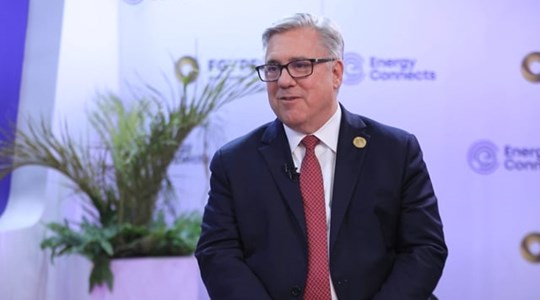
Chevron helping drive Egypt’s journey to become Africa’s energy powerhouse
Mar 11, 2024
Energy Workforce helps bridge the gender gap in the industry
Mar 08, 2024
EGYPES Climatech champion on a mission to combat climate change
Mar 04, 2024
Fertiglobe’s sustainability journey
Feb 29, 2024
India’s energy sector presents lucrative opportunities for global companies
Jan 31, 2024
Oil India charts the course to ambitious energy growth
Jan 25, 2024
Maritime sector is stepping up to the challenges of decarbonisation
Jan 08, 2024
COP28: turning transition challenges into clean energy opportunities
Dec 08, 2023
Why 2030 is a pivotal year in the race to net zero
Oct 26, 2023Partner content

Ebara Elliott Energy offers a range of products for a sustainable energy economy

Essar outlines how its CBM contribution is bolstering for India’s energy landscape

Positioning petrochemicals market in the emerging circular economy

Navigating markets and creating significant regional opportunities with Spectrum






